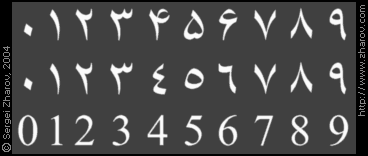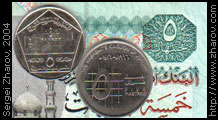Technology: Language
Pushtuns speak Pashto. Closer to Iran people speak Dari, which is a dialect of Farsi but not exactly Farsi. Pashto and Dari are two main languages of Afghanistan. Also, even in Pushtun cities like Kabul people speak Dari, which is a sign of education. The Tajiks, the Uzbeks, and other minorities have their own languages. Many people have been hiding in the former USSR during the Taliban times, and they speak good Russian. English is widespread, especially among the younger generation.

|
| A street sign in Dari in Herat: a rooster and a lewd chicken |
If you hire a translator or abuse someone's willingness to help, your experiences will be richer, like in any other country. On the other side, you can easily manage without an interpreter. Still, people always approach you on the street out of curiosity and, theoretically speaking, you can hire one of these guys for about five dollars per day plus all expenses if they travel with you. Many are ready to help you for free, especially kids who do not mind skipping school, but you obviously should not accept the offer — people need to eat something, you know. And it is better to hire adults rather than kids — they have more weight in the eyes of the locals you meet.
A pocket calculator is very helpful during bargaining sessions. You give it to a shop owner, he enters his price, you murmur, “Don't take me for a fool, man”, and enter your counteroffer. It works fine even if you two do not know a single word in common. The main thing in negotiating a price is conveying indignation and not the numbers.
As is in many other countries in this region, monetary amounts are described with the words lakh — a hundred thousands — and crore — ten millions. Not quite metric units, but this is the tradition. You are unlikely to hear these words unless marriage is the subject of a conversation. One lakh of afghanis equals approximately two thousand dollars, and this is the amount for which you can become a lucky husband of an Afghan wife.
In writing lakh and crore are denoted by additional periods, and that turns prices into something like software version numbers: 26.0.1.87.383. Problems with recognition can be easily solved by dropping periods altogether and looking at the resulting number: 260187383.
It is probably pointless to bring a Pashto dictionary with you, or even two of them, Pashto and Dari. On Flower Street in Kabul you can buy a small English–Dari dictionary for two dollars, and that will be enough.
Some Useful Dari Words And Phrases
everyday conversations
| yes — bale |
| no — nay |
| thank you — tashakor |
| please — lotfan |
| sorry — bubakhshed |
| excuse me — afsos mekonam |
| hello — salam aleikum |
| hello (in reply) — wa aleikum as-salam |
| good bye — khoda hafez |
| get lost, will you? — zay |
types of people
| I — man | brother — bradar |
| we — maa | sister — kukhar |
| you — shoma | guide — rahnoma |
| he, she — o | foreigner — kahradzhi |
| they — anha | guest — mehman |
| friend — dost | tourist — mosafar |
| foe — dushman | father — padar |
| girl — dokhtar | mother — madar |
| woman — zan | husband — shaukhar |
| guy — bacha | wife — khanoum |
| child — tefel |
characterizing things
| good — khub | stupid — abla |
| bad — gonahkar | dead — morda |
| dishonest — nadrost |
national identity
| Russia — rusiya | China — chin |
| Russian — rusi | Chinese — chinai |
| English — englizi | Pakistani — pakistani |
| America — amrika | Iranian — irani |
time
| year — saal | Friday — juma |
| month — mah | Saturday — shanbe |
| week — hafta | Sunday — yak shanbe |
| day — roz | Monday — du shanbe |
| hour — sa'at | Tuesday — se shanbe |
| minute — daqiqa | Wednesday — char shanbe |
| second — saniya | Thursday — panj shanbe |
| morning — sobh | today — imroz |
| night — shab | tomorrow — farda |
| spring — bahar | day after tomorrow — pasfarda |
| summer — tabestan | yesterday — diroz |
| fall — khazan | day before yesterday — pariroz |
| winter — zemestan |
numbers
| 0 — sefer | 10 — dah | 20 — bist | 100 — sad |
| 1 — yak | 11 — yazdah | 21 — bist o yak | 1000 — hazor |
| 2 — du | 12 — duazdah | 22 — bist o du | 100000 — lakh |
| 3 — se | 13 — sezdah | 30 — si | 10000000 — kror |
| 4 — char | 14 — chardah | 40 — chel | |
| 5 — panj | 15 — panzdah | 50 — pinja | 1/2 — nim |
| 6 — shash | 16 — shanzdah | 60 — shast | 1/3 — yak sovom |
| 7 — haft | 17 — hafdah | 70 — haftad | 1/4 — yak charom |
| 8 — hasht | 18 — hajhdah | 80 — hashtad | 2/3 — du bar se |
| 9 — noh | 19 — nozdah | 90 — nawad | 3/4 — se bar char |
food
| food — khorak | meat — gosht |
| hungry — goshna | pork — goshti hook |
| spoon — chamcha | beef — goshti gau |
| fork — panja | chicken — goshti morgh |
| breakfast — naashta | fruit — mewa |
| lunch — nahr | apple — seb |
| dinner — naneh shab | banana — kela |
| hot green tea — chai sabz | grapes — angur |
| hot black tea — chai siyah | melon, watermelon — kharbuza |
| sugar — shakar | orange — malta |
| water — aab | plum — alu |
| tap water — shirdan | raisins — kishmish |
| alcohol — mashrub | vegetable — tarkari |
| rice — birinj | tomato — banjani rumi |
| pilau — pilau | onion — piyaz |
| kebab — kebab | potato — kachalu |
accommodations
| hotel — otel | blanket — kampal |
| room — otak | electricity — barq |
| bed — chaparkat | bathroom — tashnaab |
| mattress — doshak | laundry — shostosho |
| pillow — mataka |
businesses
| bookstore — dokani kitab | phone — telefun |
| post office — postakhana | police station — sapot |
| post stamp — tikiti posta | policeman — polis |
| postcard — poskard | where is …? — koja … ast? |
| bus station — motarkhana | what is this? — che ast? |
| car — motar | how much? — chand i? |
| bus — bus | are you nuts? — qimat ast! |
Arabic Digits

|
Learn Arabic digits — it is so easy with the right approach and is useful not only in Iran, Afghanistan, Pakistan, but in a couple of dozens of other countries.
For starters, 1 and 9 are just like our digits: ١ and ٩. It is not obvious at first, but 2, 3, and 7 are also just like ours, but they have been rotated 90 degrees clockwise. More exactly, our digits have been rotated: Arabic digits were written sideways on narrow stones of ancient counting devices, and this is how they have made it to our culture. Turn the Arabic digit ٢ 90 degrees counterclockwise, and you will immediately see our 2 with a long tail in it. Same with 3 — ٣ — and 7 — ٧.
In other words, you already know half of Arabic digits without really memorizing anything. Now you need to look at a five-dinar coin and get surprised by its nominal value of “zero”. Because the zero-like circle — ٥ — is actually 5. This you will remember forever, so strange it is. But then how do they write a zero? It is just a dot: ٠.

|
| Syrian five liras and Jordanian five piasters with Egyptian five pounds |
Now let us look at ٧ and ٨. It is not hard to memorize that they are 7 and 8 — only these two digits match each other so nicely. To remember which one is which, there is a mnemonic rule, “seven is open to heaven.” Also, if you rotate them counterclockwise, you will recognize our 7.
Well, only now the difficult part begins, but you already know eight digits out of ten. The remaining two are 4 and 6: ٤ and ٦. And the difficulties are that the first one looks like a mirrored 3, and the second one — like 7 or even 4. You have to memorize these two. As for 4, just remember that we either recognize an Arabic digit the way it is or rotate it 90 degrees, but we never mirror anything. For 6 we can notice that if we rotate it, it does look like 6 with an unfinished circle.
Also, in some countries 4 and 6 — and 5 to some extent — are written a little bit differently. Here we give both variants in the picture.
So, the technology of recognizing an Arabic digit is not complicated. ١ and ٩ are just like ours. ٧ and ٨ are helped with by the mnemonic rule. ٠ and ٥ are remembered because of the coins and notes with “zero” value. If your digit is something other than these ones, rotate it counterclockwise, and you get ٢ and ٣. If that does not work either, you now know you have either 4 or 6, and only about them you have to think a little.
In Arabian countries the license plates are often duplicated both in Arabic and our digits, and this is the best exercise, to walk on the street trying to decipher the numbers and checking the results.
The final note: although Arabic words are written in the opposite direction, from right to left, the numbers are written in the same way as we do it. For example, ١٩ means 19, not 91.
next: Life
more: Other things
this page: http://www.zharov.com/afghan/language.html
copyright: © Sergei Zharov, text, photos, maps, design, code, 2004–2024
feedback: sergei@zharov.com

